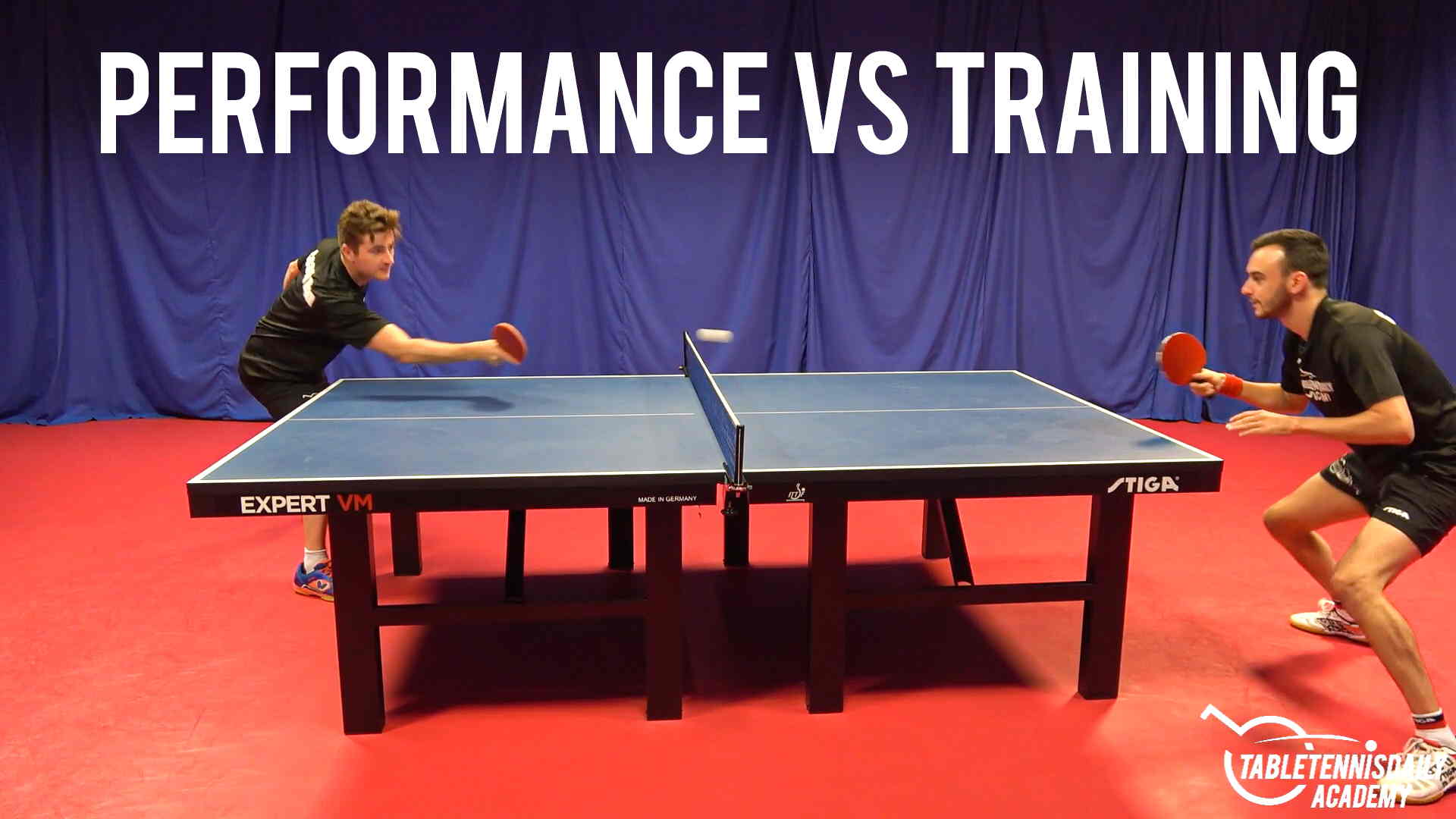When you’re training, are you training to learn a new skill? Or, are you training to perform well using skills you have already developed? If you haven’t given it much thought you are not alone. However, defining whether your training is geared towards learning or performance can give you greater clarity in what you’re trying to achieve and how your table tennis training should look.

First, let’s take a look at practising to learn a new skill. Learning is a tricky thing to measure. How can you be sure that you have learnt a skill? Two signs that indicate that learning has taken place include a high retention rate and if the skill transfers to new situations.
Retention is how well a player can perform after an extended period not doing the practice activity or skill. Transfer considers how will a skill transfers into a match. It is common for players to perform skills well in practice and not be able to perform them to the same level in a match.
Research tells us that higher variability during practice will result in higher levels of retention and transfer of a skill (variable/random practice). Even combining the skill with others will increase retention and transfer levels. This type of practice may result in a higher number of mistakes. However, this is a characteristic of learning and is vital for improvement. The practice should aim to be representative of a match as much as possible. You should be aiming to increase the variability of the practice as soon as you are able.
An example of this in action would if you were learning how to do a forehand topspin. Instead of just repeating hundreds of the same forehand topspin in a row from the same place with the same spin, try and add some different placements and spins. Another way to increase the variability would be to add other shots into the mix. If you can make the practice look like a match you are on to a winner.
Here I would like to provide a warning. Levels of mistakes that are too high during practice will mean that the skill is not performed well enough times for learning to occur. However, staying within your comfort zone and making no mistakes at all will not be as effective for learning. A further warning, I would like to mention is that making mistakes can impact confidence. It is normal for confidence levels to rise and fall so make sure to be aware and modify your training if you need a confidence boost.
So how would practising for performance be different from learning a new skill? The aim here is somewhat different. Instead of trying to gain a new skill you will already be competent at the skill and are trying to increase its performance. Performance in this instance would mean the reliability, amount of spin, amount of speed, etc, of the skill. For this type of practice isolating the skill can be of use. For example, looking again at the forehand topspin, you could practice just the shot on its own or in a regular sequence; limiting the variability to a level that does not make the shot breakdown. Consistency and higher levels of speed or spin can be achieved by doing this thereby increasing its performance.
In your practice have a clear idea of what you are trying to achieve and select the type of practice that reflects your aims, this will give you training more purpose and focus which allows you to develop and improve faster as a player!
At the TableTennisDaily Academy we have over 100 coaching tutorials covering technical, tactical and psychological aspects as well as in depth match analysis. As a member of the TableTennisDaily Academy you’ll also have full access to our “coach corner” which gives you the ability to ask questions that professional coaches Dan and Tom will answer. Whatever your questions, get swift and reliable coaching feedback you can trust right at your fingertips. You can even post videos of yourself in action for Dan and Tom to analyse, they will provide specific advice to help you take your game to the next level! So what are you waiting for, access your free trial today!
